► Kia’s seven-seater gets a facelift
► Petrol-electric, hybrid or diesel
► Priced from £40k, on sale now
This is the fourth generation Kia Sorento, and it’s been updated for 2024. It’s not the only seven-seater in Kia’s range, as it shares showroom space with the all-electric EV9. Given the headlines that car’s been grabbing, this one’s going to have a tough time.
But the Sorento’s an all-hybrid model range, sits far lower down the price scale, and has already won plaudits for its quality, equipment and all-round usability. Giving it a new front-end look that ties it closer to the EV9 is a hugely sensible step for Kia to make – but does it raise false expectations for what is essentially a very light facelift?
At a glance
Pros: Smooth and quiet, you can still buy a diesel, quality, fit and finish
Cons: Lacks power, ride quality isn’t the best, rear-most seats are cramped
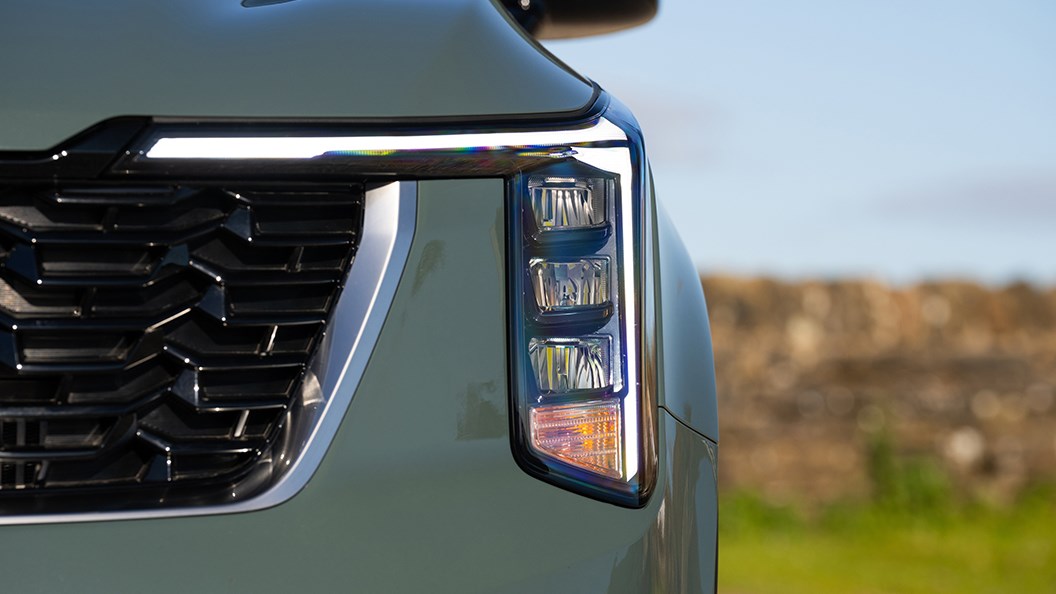
What’s new?
Well… in reality, although you get that new corporate front end, little has changed over the outgoing Sorento. It’s quite a look, with new vertical headlights and ‘star map’ daytime running lights to help it stand out from the crowd. It works, as it remains as the Sorento remains as imposing as ever, but with added individuality.
Otherwise, you get the same engine line-up as before, a mildly tweaked interior, and some adjustments to the steering and suspension settings to give it a little more driver feel. But essentially, this car is aimed at the US market, and it shows.
What are the specs?
Hybrid powertrains are the name of the game for petrols – from a self-charger to plug-in. The Sorento hybrid combines a 1.6-litre four-pot petrol to a 44.2kW electric motor and a 1.48kWh battery to help things along. Badged 1.6 T-GDi HEV, the combined power is 226bhp and 258lb ft of torque.
It takes 9.0 seconds to get from 0-60mph and top speed is 119mph. Claimed fuel consumption ranges from 38.2-40.9mpg, but in our hands and on a mainly rural test route, we were in the low-30s. CO2 emissions are pegged at 158g/km, which is good for a car of this size.
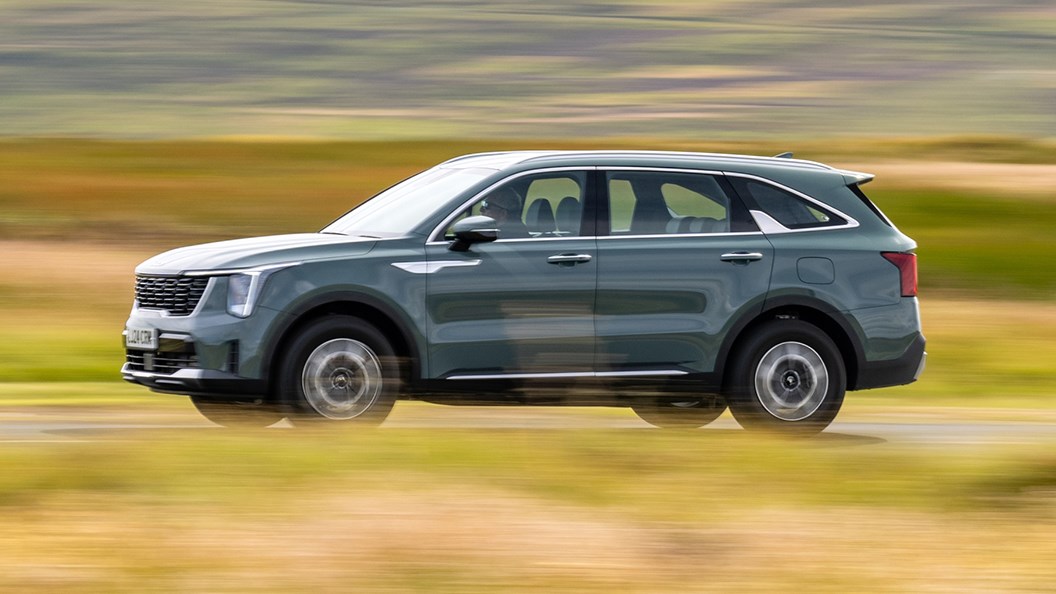
Next comes the plug-in hybrid. At the heart of the drivetrain is the same 1.6-litre petrol engine, but it’s combined with a more powerful 66.9kW electric motor and 13.8kWh battery, for more electrical assistance. Power is predictably up to 262bhp but torque remains identical at 258lb ft, and the electric-only range is 35 miles. Acceleration is a little quicker, with a claimed 0-62mph time of 8.7 seconds.
Finally, the diesel. The darling of the towing fraternity remains as it was, powered by Kia’s familiar 2.2-litre CRDi unit developing 199bhp and 325lb ft of torque. On paper, it’s a little slower than the hybrids, with a 0-62mph time of 9.1 and maximum speed of 127mph. On the road, it feels way more effortless – not bad considering the claimed fuel consumption is 42.2mpg with CO2 output at 176g/km.
The range comes in three trim levels – ‘2’, ‘3’ and ‘4’ – with the three power options being offered on all of them. There are no manual versions, with all models having automatic transmission, with the petrol-powered cars getting six speeds and the diesel eight. The Sorento’s excellent towing capability is as it was, with a braked towing weight of 2,500kg for the diesel and 1,650kg for the hybrid.
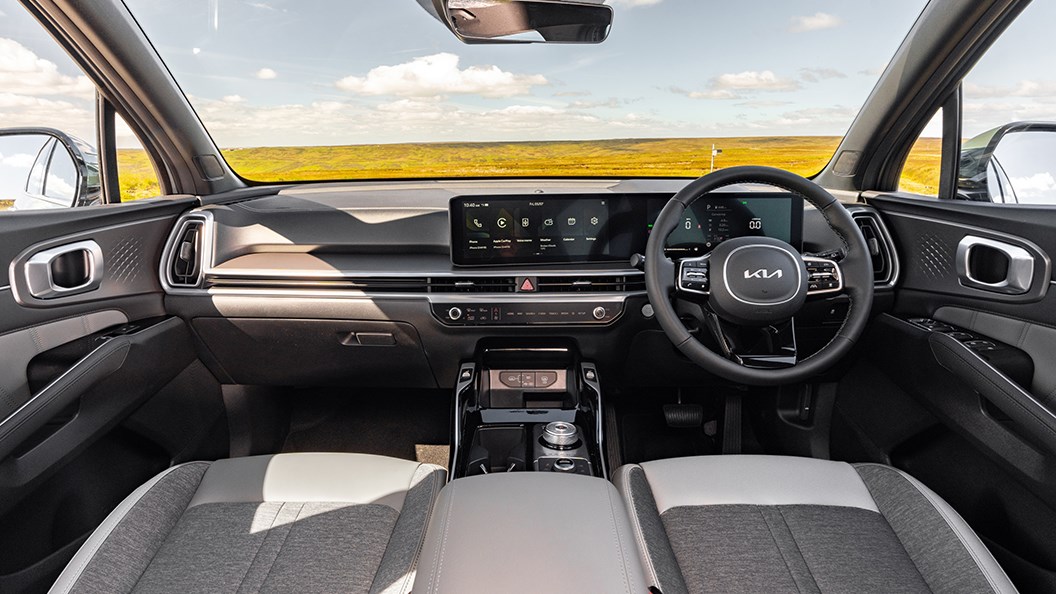
What about the interior?
The Sorento gets a lightly updated interior that’s sleeker and is topped off by a new infotainment set-up that looks very similar to those fitted to the EV6 and EV9. As before, fit and finish impresses, as does its design and technology. It’s modern with tasteful use of brightly coloured and textured trim on the dashboard.
It’s functional, modern, with a good mix of soft-touch plastics and brightly coloured highlights and textured trim on the dash. It’s not particularly luxurious, but it’s well built – perhaps a good thing if you want to avoid spoiling your children, or worrying about bits of trim getting scuffed and covered in food.
You get a 12.3-inch infotainment system with wireless Android Auto and Apple CarPlay fitted as standard. The screen’s graphics are sharp, but it can be tricky to use on the move due to the sheer number of sub menus to swipe in and out of. But the good news is that it integrates seamlessly with your smartphone, and also has an excellent built-in voice control system.
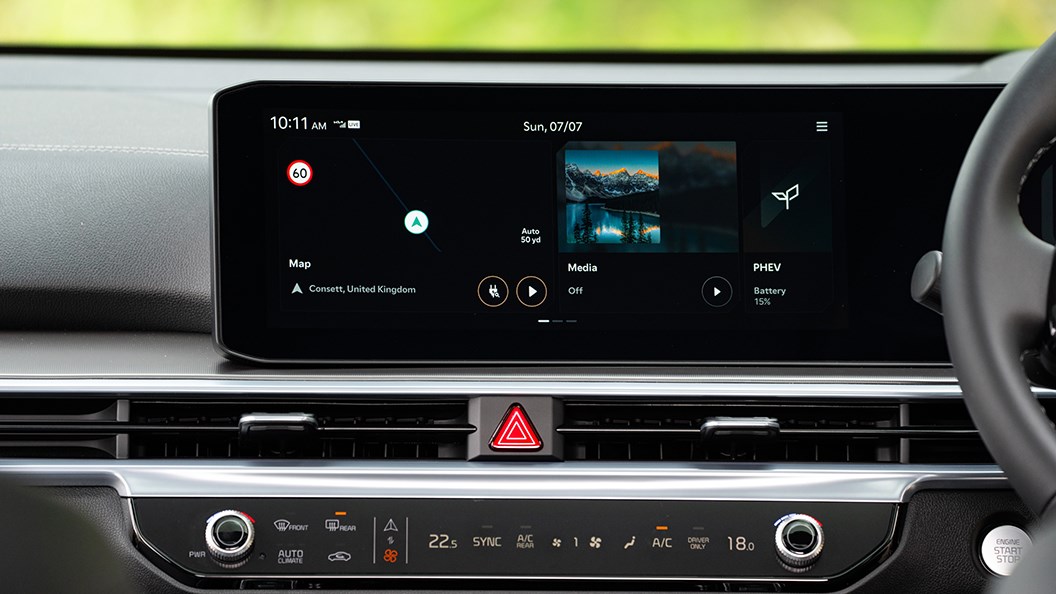
The 12.3-inch (or 4.0-inch for the ‘2’ model) digital cockpit screen is clear, sharp and has great contrast, but there’s not a great deal of customisation or a full map setting for the nav. You might need to do a bit of digging to find the well-hidden sub menus for the driver assistance systems, too.
In terms of space, it’s good room for the first two rows with an okay situation for those in the rearmost seats (below). Yes, it’s best to place children back there, but those in the middle row won’t have their knees so bunched up when they compromise some of their legroom for those behind them. That puts it ahead of a Mercedes-Benz GLB and Land Rover Discovery Sport.
Boot space in five-seat mode ranges from 608 litres for the hybrid, with 616 for the diesel.
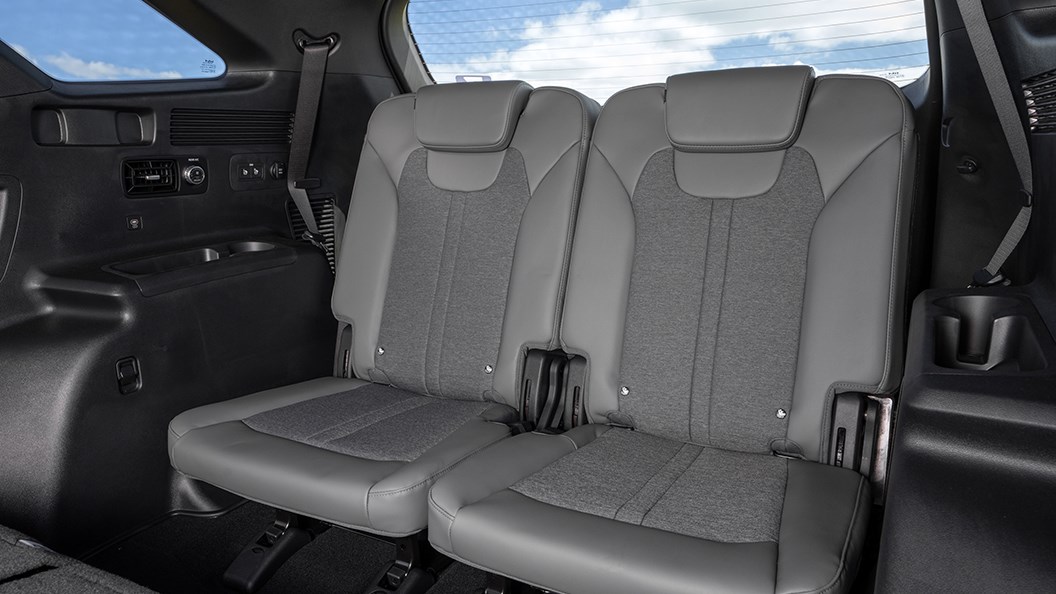
How does it drive?
It’s very much as before, but with marginal gains. We’ll start with the hybrid. The electrical assistance at low revs is very welcome, disguising this ‘small engine, big car’ scenario quite well around town. This is thanks to excellent throttle response that delivers quick getaways without unsettling your other six occupants.
Sadly, that feeling of low-speed response soon fades away once you leave the city limits. You can gently cruise up to the national speed limit with little fuss, but turning up the wick exposes its outright lack of go – whether it’s to overtake or get up to speed on a motorway slip road – this engine will be shouting its disapproval at revs. It’s not slow, but load it up, and you’ll be working a lot harder than you might expect.
The plug-in hybrid model is more responsive. On the road, there’s more of a feeling of relaxed power here than with the cheaper self-charging hybrid version, with a little more mid-range muscle for overtaking or gaining speed on uphill inclines – areas where that car can feel pretty flat.
But as before, the diesel is the best of the bunch. It feels like a better match with its high torque output and relaxed power delivery, but for those who potter around town, there is a case for the hybrid. We’d hold out for the plug-in when it arrives later, though, for that beefier electric motor.
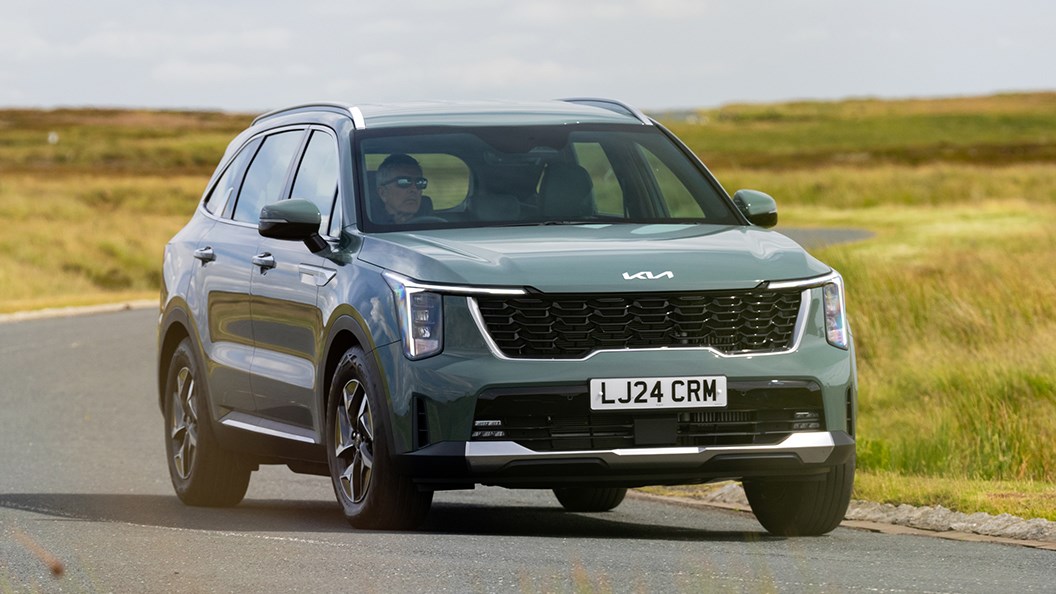
Given its size, the Sorento feels quite agile on the road and it’s very easy to pilot. In short, the Sorento doesn’t feel like a tank. The controls are easy to use without being numb, and although the brake pedal in the diesel is extremely light and highly assisted, the hybrid has a reassuring amount of regenerative action.
Trying to drive it quickly on twisty roads is a futile exercise, and not only will the car be unhappy, you’ll have to face the potential wrath of six angry passengers as well, so it’s best to drive it in a relaxed manner.
The chassis setup is firm enough to stop it from wallowing and offers just enough road feel, especially following the set-up changes that arrived with the facelift. It’s similar to a Skoda Kodiaq in terms of balance – if you want something more nimble, look towards the Mercedes-Benz GLB. If you want a luxurious ride quality, the facelifted Discovery Sport is the way to go.
There are plenty of drive modes to choose from: all selected by a rotary dial in the centre console between the front seats. You get a choice of Eco, Sport and Smart (plus an additional Comfort mode on the diesel), which adjusts throttle and steering sharpness. Sport brings regenerative braking, while Eco lets you coast. Off road modes include Snow, Mud and Sand.
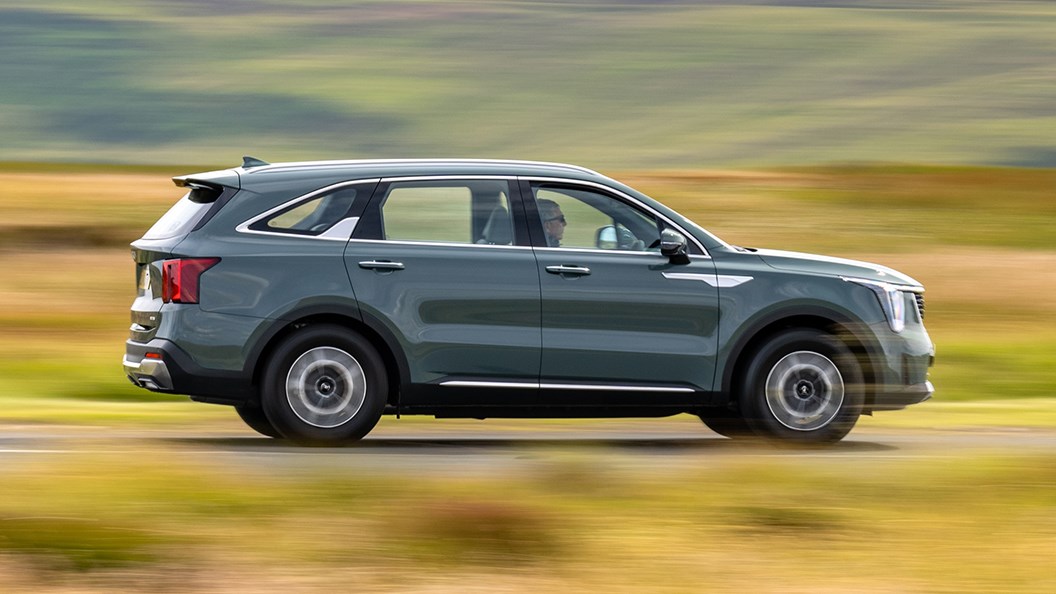
Before you buy
In terms of rivals, the Sorento competes with a range of diverse cars that encompasses the Peugeot 5008, Land Rover Discovery Sport, and the VW Group offerings of the new Skoda Kodiaq, soon-to-be-replaced SEAT Tarraco and the upcoming Volkswagen Tayron. Let’s not forget the impactful-looking new Hyundai Santa Fe, which may completely overwhelm the Sorento.
With a starting price of more than £40k, this is no bargain basement offering, but such is the pace of Kia’s progress in the minds of car buyers, this no longer feels like a lot of money for one of its cars.
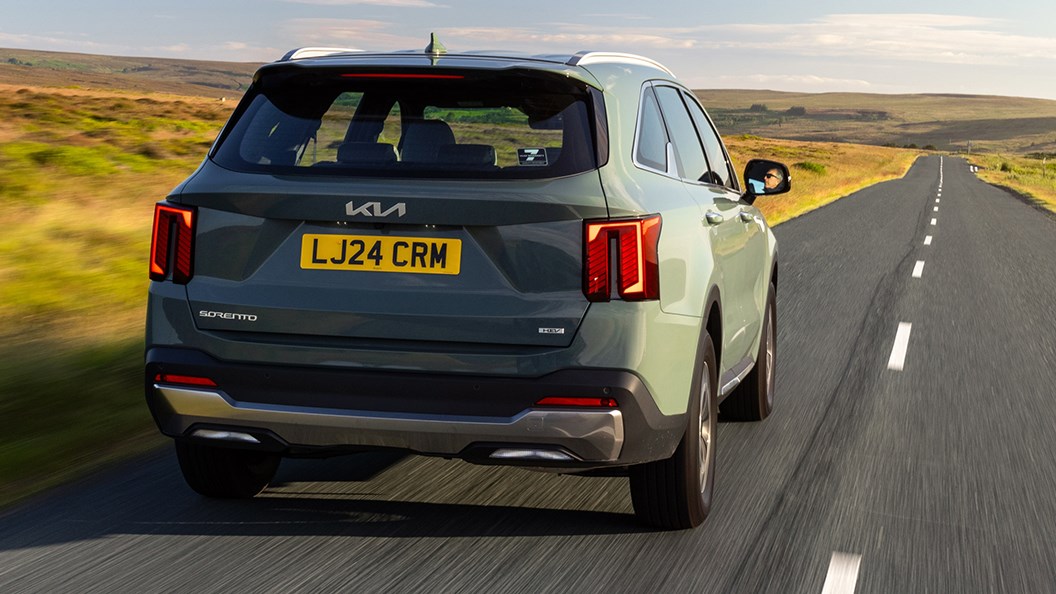
Verdict
Although the Kia Sorento isn’t going to move on the automotive game one jot, it’s a worthwhile addition to the automotive landscape, as it is a practical SUV that seats seven, which has been done well.
It certainly ticks a lot of boxes and seems ideal for those who simply need a practical vehicle to accommodate their active lifestyle, rather than be a highly fashionable one that merely suggests what they could be doing.
In reality, a practical MPV such as the Volkswagen Multivan does the seven-seater thing so much better, but most buyers don’t seem to want that. Shame.
Price and specs for the entry-level 1.6T-GDI HEV